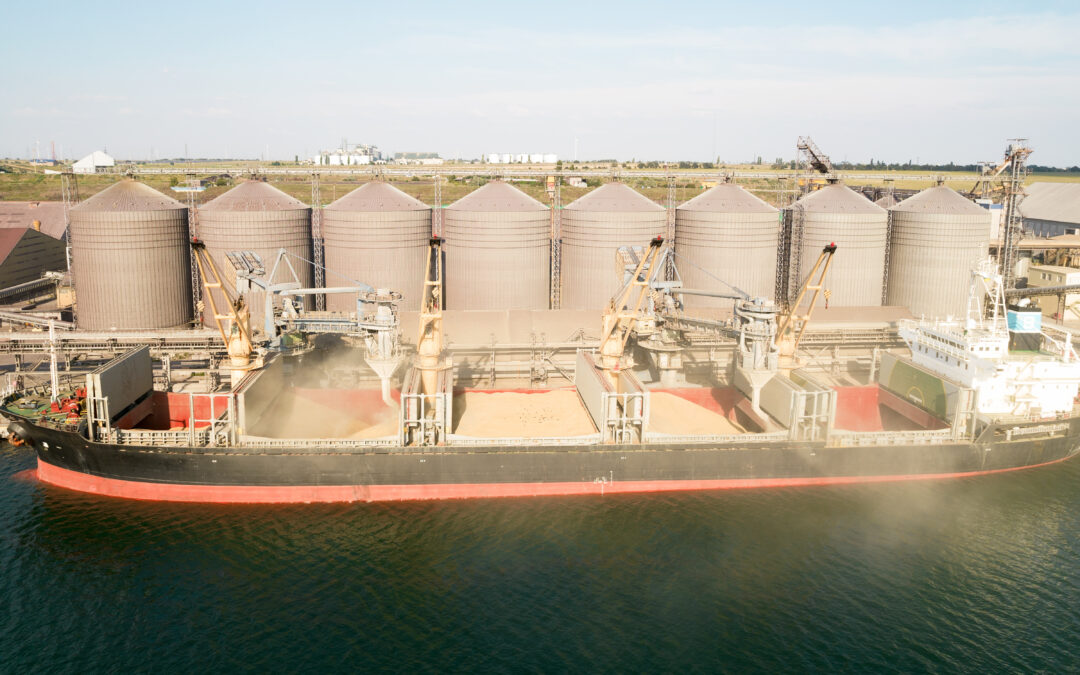Advantages of Bulk and Break Bulk Cargo
In the logistics and shipping industry, the method, equipment and cost involved are decided on the type of cargo that is being transported. There are two commonly used cargo types that serve different purposes in global trade. One is bulk Cargo and the other is Break Bulk Cargo. In this blog, we will talk about both these cargo types, their advantages, limitations and other factors.
What is Bulk Cargo?
Goods that are transported directly into containers in large quantities while being packed individually are termed as Bulk Cargo. Bulk Cargo is divided into two types:
1. Dry Bulk Cargo:
Here the items are frequently loaded and unloaded with specialized equipment such as conveyor belts or cranes. Solid items like grains, coal, cement, fertilizers, and ores are shipped in Dry Bulk Cargo.
2. Liquid Bulk Cargo:
As the name suggests, liquid commodities including crude oil, chemicals, liquid natural gas (LNG), and vegetable oils are shipped in Liquid bulk cargo. They are stored in dedicated tanks and delivered by tankers or pipelines.
Having a reputation synonymous with trust, we at Total Transport measure the cargo by weight or volume instead of number of units, which is ideal for the industries dealing in raw materials.
Advantages of Bulk Cargo
Cost-Effective: The cost per unit is reduced for large volumes when it comes to bulk shipping due to economies of scale.
Streamlined Loading and Unloading: For faster handling of the goods specialized equipment such as conveyor belts and pipelines are utilised.
Lower Packaging Costs: Businesses save on material and labor expenses as goods are not individually packaged.
What is Break Bulk Cargo?
Break bulk cargo includes items that are too large, heavy, or oddly shaped to fit into a standard shipping container. These goods often need special handling and may include oversized, heavy, or hazardous materials.
Advantages of Break Bulk Cargo
Versatility: This type of shipping can accommodate items of varying sizes and shapes, including oversized goods.
Accessibility: Break bulk vessels can use smaller ports that don’t have the equipment for handling large shipments.
Customized Handling: Special care is ensured for fragile or high-value items as goods are handled individually.
Being a leading logistics company in India, Total Transport offers greater flexibility along with efficient handling and packaging required for Break Bulk Shipping.
Factors to Consider When Choosing Between Bulk and Break Bulk Cargo
Nature of the Goods: Bulk cargo is suitable for raw materials like coal or grains, while break bulk is better for items like machinery or vehicles.
Volume of Shipment: For large quantities, bulk shipping is more cost-effective. Break bulk shipping is ideal for smaller or irregular shipments.
Port Facilities: Consider whether the destination port has the necessary infrastructure for bulk shipping or if it’s better suited for break bulk cargo.
Cost and Budget: While bulk shipping reduces cost per unit, break bulk may incur higher costs due to packaging and handling but offers greater versatility.
Time Sensitivity: Bulk shipping is faster for loading and unloading large volumes, while break bulk can take longer due to individual handling.
Conclusion:
In global trade, both bulk and break bulk cargo play essential roles. Each type of shipping fulfills specific shipping needs. Businesses can take an informed decision to streamline their logistics operations by understanding the differences and evaluating factors such as the nature of goods, volume, port infrastructure, and budget etc.
Whether you’re transporting raw materials in bulk or handling oversized machinery as break bulk, Total Transport can help you choose the right method, which can significantly impact your supply chain efficiency and cost-effectiveness. As an established and reputed company, we at total Transport Systems Ltd can keep you informed about emerging trends that may help you stay ahead in the competitive world of logistics.





Recent Comments